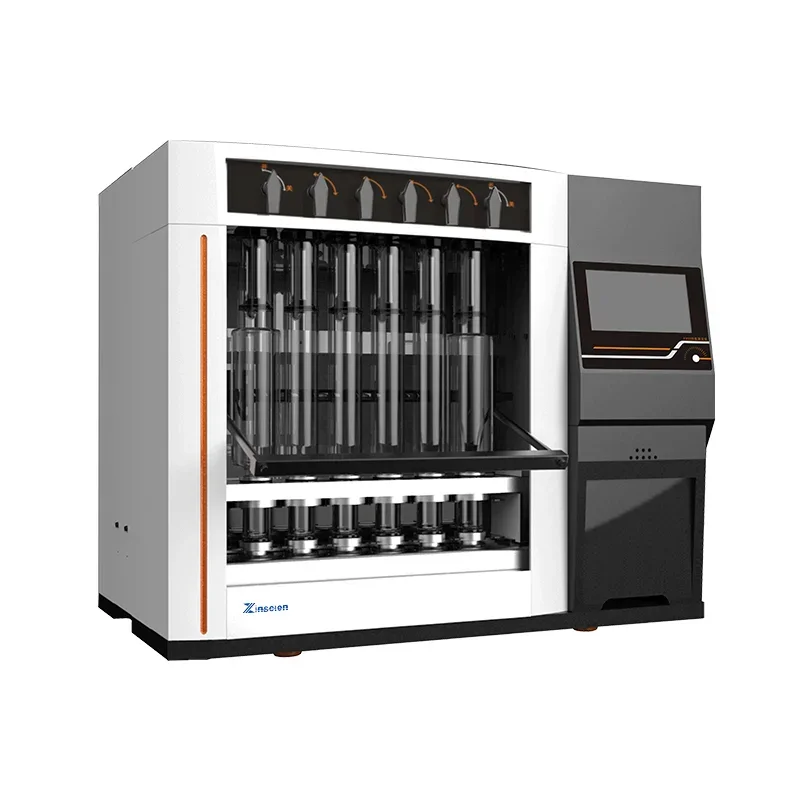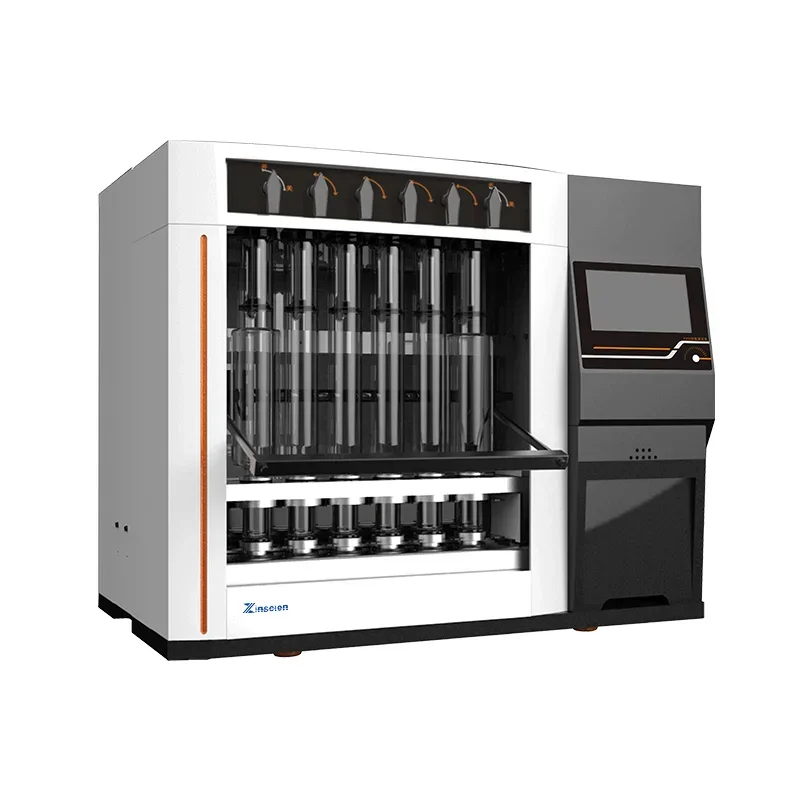In the realm of agricultural and food science, precise analysis of fiber components is crucial for understanding the nutritional value and quality of various products. Enter the Zinscien Technology fiber analyzer, a sophisticated instrument designed to meet these analytical needs with unparalleled accuracy and efficiency. The use of fiber analyzer not only improves the efficiency and accuracy of fiber component detection, but also provides strong technical support for studying the impact of dietary fiber on human health, optimizing feed formulations, and developing new functional foods.

1. Overview of Fiber Analyzer
The fiber analyzer is a state-of-the-art device that utilizes advanced technology to determine the fiber content in various samples. It is engineered to handle a diverse range of agricultural and food products, providing crucial data for research, quality control, and formulation purposes.
2. Core Applications
2.1 Agricultural Products
The fiber analyzer applies to a broad spectrum of plant materials, including crops, forage, and residues. By accurately measuring the fiber components, farmers and researchers can optimize crop varieties, feeding practices, and overall agricultural productivity.
2.2 Feed Industry
In the feed industry, the instrument plays a vital role in formulating balanced diets for livestock and poultry. By determining crude fiber, neutral detergent fiber (NDF), acid detergent fiber (ADF), and other fiber fractions, feed manufacturers can ensure that animal feeds meet specific nutritional requirements, enhancing animal health and performance.
2.3 Food Industry
The food industry also benefits greatly from the fiber analyzer. It aids in the development of healthier food products by providing detailed fiber content information. This is particularly important in the trend towards more nutritious and fiber-rich diets.
2.4 Other Agricultural Products
Beyond traditional crops and feeds, the fiber analyzer is also applicable to other agricultural products such as biofuels, textiles, and pharmaceuticals. Its versatility makes it an indispensable tool in various stages of product development and quality assurance.
3. Detailed Analytical Capabilities
3.1 Crude Fiber Determination
One of the fundamental functions of the fiber analyzer is the determination of crude fiber. This measurement provides insight into the insoluble dietary fiber content, which is essential for understanding the digestive properties of a sample.
3.2 Neutral Detergent Fiber (NDF) Analysis
NDF represents the cell wall components of plant materials, including cellulose, hemicellulose, and lignin. The fiber analyzer employs a specialized neutral detergent solution to accurately quantify NDF, offering valuable information on the digestibility and energy content of feeds.
3.3 Acid Detergent Fiber (ADF) Analysis
ADF consists primarily of cellulose and lignin, reflecting the more resistant fractions of plant cell walls. By measuring ADF, researchers can assess the potential ruminant digestibility of a sample, guiding feed formulation and animal nutrition strategies.
3.4 Hemicellulose Determination
Hemicellulose, a component of plant cell walls, plays a crucial role in the digestibility and overall nutritional value of agricultural products. The fiber analyzercalculates hemicellulose by subtracting ADF from NDF, providing a precise estimate of this important fiber fraction.
3.5 Acid Detergent Lignin (ADL) Analysis
ADL represents the most recalcitrant fraction of plant cell walls, primarily consisting of lignin. By measuring ADL, researchers can gain insights into the lignification process and its impact on the digestibility and quality of agricultural products.
4. Advanced Features and Benefits
4.1 Automation and Efficiency
The fiber analyzer is equipped with advanced automation features that streamline the analytical process. This not only reduces the time required for analysis but also minimizes human error, ensuring consistent and reliable results.
4.2 Precision and Accuracy
With its sophisticated detection systems and precise measurement capabilities, the fiber analyzer delivers highly accurate fiber content data. This precision is crucial for making informed decisions in agricultural and food science research.
4.3 User-Friendly Interface
The instrument features an intuitive user interface that simplifies operation and data analysis. Users can easily navigate through the system, set parameters, and retrieve results, making it accessible to a wide range of professionals.
4.4 Customizable Reports
The fiber analyzer generates comprehensive reports that include all relevant data and analytical results. These reports can be customized to meet specific needs, facilitating effective communication and data sharing among stakeholders.
Conclusion
The fiber analyzer is a powerful tool that significantly enhances the analysis of fiber components in plant, feed, food, and other agricultural products. Its wide range of applications, detailed analytical capabilities, and advanced features make it an indispensable resource for researchers, farmers, feed manufacturers, and food processors alike. By leveraging the precision and efficiency of the fiber analyzer, professionals in these fields can make more informed decisions, driving innovation and improving overall product quality.
https://www.zinscien.com/main-functions-and-features-of-fiber-analyzer.html

